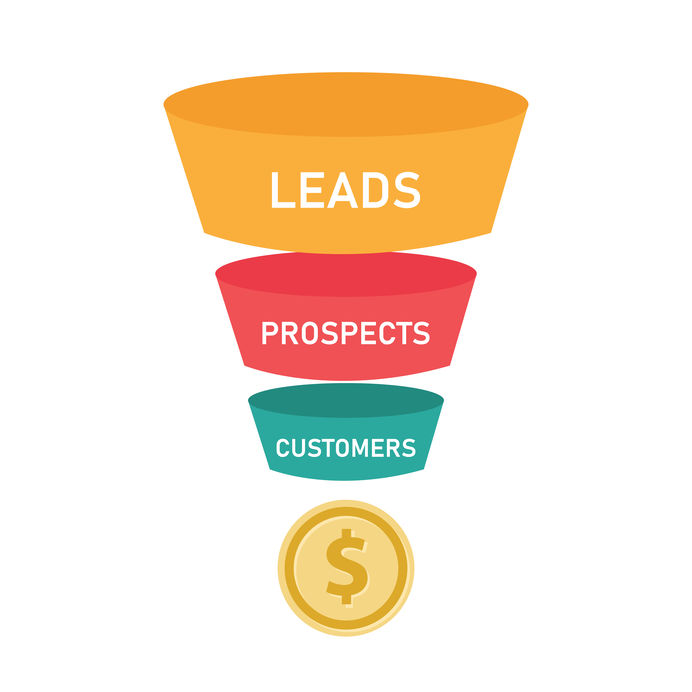Business
Staying Ahead: How to Adapt Your Business to Market Changes

In today’s fast-paced world, market conditions can change in the blink of an eye. Whether driven by technological advancements, shifts in consumer preferences, or economic fluctuations, businesses must be agile to survive and thrive. Here’s how you can ensure your business stays ahead by effectively adapting to market changes.
Understanding the Importance of Adaptation
Adaptation is not just about reacting to change; it’s about anticipating it and being prepared. Businesses that fail to adapt often find themselves struggling to catch up, losing market share, and potentially facing closure. Conversely, companies that embrace change can leverage new opportunities, gain competitive advantages, and achieve sustained growth.
1. Stay Informed and Agile
To adapt effectively, you must stay informed about the latest trends and developments in your industry. This involves regularly reading industry news, attending conferences, participating in webinars, and networking with peers. Subscribing to trade journals, following thought leaders on social media, and joining industry groups can also provide valuable insights.
Agility, on the other hand, involves being able to pivot quickly when necessary. This means having flexible processes and structures that allow your business to respond swiftly to new information or changing circumstances.
2. Foster a Culture of Innovation
A culture of innovation encourages employees to think creatively and explore new ideas without fear of failure. This can be achieved by creating an open environment where suggestions are welcomed and by providing resources for experimentation.
Encourage cross-functional teams to collaborate, as diverse perspectives can lead to more innovative solutions. Regular brainstorming sessions and innovation workshops can also spark new ideas and foster a mindset of continuous improvement.
3. Invest in Technology
Technology is a major driver of market change. Investing in the right tools and systems can help your business stay ahead. This could include anything from advanced data analytics to customer relationship management (CRM) software, which can provide valuable insights into customer behavior and market trends.
Additionally, embracing automation and artificial intelligence (AI) can streamline operations, reduce costs, and improve efficiency. For instance, AI can be used to predict market trends, optimize supply chains, and enhance customer service through chatbots.
4. Understand Your Customers
As customer needs and preferences continually evolve, it’s essential to have a thorough understanding of your target audience to stay ahead. Regularly conducting market research, surveys, and focus groups is vital for gathering valuable feedback and insights.
Leveraging data analytics to monitor customer behavior and identify emerging trends can help you stay informed. Additionally, employing FutureSight’s media mix modeling allows you to analyze the impact of various marketing channels on consumer actions, providing a comprehensive view of your marketing effectiveness. This combined information enables you to refine your products or services to align with shifting demands, ensuring your business remains relevant and competitive in a dynamic market.
5. Diversify Your Offerings
Relying on a single product or market can be risky. Diversifying your offerings can help mitigate this risk and open up new revenue streams. This could involve developing new products or services, entering new markets, or targeting different customer segments.
For example, during the COVID-19 pandemic, many restaurants diversified by offering takeout and delivery services, which helped them survive despite restrictions on in-person dining.
6. Build Strong Relationships
Strong relationships with customers, suppliers, and other stakeholders can provide stability and support during times of change. Maintain open lines of communication and be transparent about any changes or challenges your business is facing.
Loyal customers can provide valuable feedback and support, while reliable suppliers can help you navigate supply chain disruptions. Networking with other businesses can also lead to partnerships and collaborations that benefit all parties involved.
7. Monitor Your Competitors
Keeping an eye on your competitors can provide valuable insights into market changes and emerging trends. Analyze their strategies, successes, and failures to identify opportunities and threats.
Competitive analysis tools can help you track competitors’ activities and benchmark your performance against industry standards. Use this information to refine your own strategies and stay one step ahead.
8. Be Financially Prepared
Financial flexibility is crucial for adapting to market changes. This means maintaining a healthy cash flow, having access to credit, and managing debt effectively. Consider creating a financial contingency plan that outlines how you will manage your finances during periods of uncertainty.
Regularly review your financial statements and key performance indicators (KPIs) to ensure you are on track and can make informed decisions quickly.
In Conclusion
Adapting to market changes is not a one-time effort but an ongoing process. By staying informed, fostering innovation, investing in technology, understanding your customers, diversifying your offerings, building strong relationships, monitoring competitors, and being financially prepared, you can ensure your business remains resilient and competitive in an ever-changing landscape.
Remember, the key to staying ahead is not just to react to change, but to anticipate it and embrace it as an opportunity for growth and improvement.
Business
Lead Generation: How Much Does it Cost?

Lead generation is the lifeblood of any growing business. Everything is geared towards drawing in prospects, and you need them for your business to grow. Yet the costs behind lead generation can be a bit of a mystery. Usually, the prices are driven by some factors, so it can be pretty expensive.
How Do You Determine the Cost of Lead Generation?
Before you begin finding leads, you need to think of it’s cost. This will help you in your decision. Here are some of the things that can influence how much leads cost:
Industry and Target Audience
Lead generation cost is heavily dependent on the particular industry and who you are targeting. For example, in highly competitive finance or technology markets, leads will be more expensive. The reason is that they are in high demand, and the market is saturated. On the other hand, lead generation costs may be cheaper in less competitive markets. So, it’s important you know your industry and how accessible the target audience is to help you estimate the costs of generating leads.
Lead Generation Methods
The methods that you use to acquire leads will, in large part, dictate the amount. To be specific, buying a lead list can cost anywhere from $500 to $2,000 per 1,000 contacts, which is expensive. However, if you invest in some tools, it can help you save money. There are sales tools that can cut time and are effective in generating leads.
Technology and Tools
As mentioned earlier, there are some advanced technologies and tools that may have an impact on the cost of your lead generation. Aside from the monetary cost of the tools, you will need to make sure they are up-to-date. Also, it will require training and integration with other resources for it to actually benefit you. So, it is important to weigh the benefits over the cost. The goal should be how it will help achieve your lead-generating goals.
Final Thoughts
In summary, there is really no such thing as a lead generation cost. It will vary on the industry and the tools you’re using. So, your focus should be on what will work best to meet your business objectives. Also, consider how you can create a cost-efficient lead generation plan with the highest returns.
Business
7 Tips to Reduce the Environmental Impact of Product Deliveries

With the rise of e-commerce and fast deliveries, the environmental impact of logistics has become a major concern. Every day, thousands of trucks, vans, and scooters take to the roads, producing CO₂ emissions, contributing to urban congestion, and generating significant amounts of waste, particularly through packaging.
But here’s the good news: solutions exist to mitigate this impact! By adopting more sustainable practices, businesses and consumers can help reduce the carbon footprint of deliveries while meeting growing demand.
In this article, discover 7 practical tips to make product delivery more environmentally friendly, and learn how these changes can make a real difference for our planet.
I. Why Reducing the Environmental Impact of Delivery is Crucial
The Environmental Impact of Deliveries
With the growth of online shopping, product deliveries have significant consequences for the environment. Key impacts include:
- CO₂ Emissions: Vehicles used for transport, often running on fossil fuels, contribute significantly to global warming.
- Urban Congestion: In cities, delivery trucks and vans increase traffic, leading to more pollution and noise.
- Packaging Waste: Many deliveries come with excessive cardboard, plastic, or filler materials that end up as waste.
Key Figures Highlighting the Issue
- Deliveries account for nearly 30% of greenhouse gas emissions from road transport.
- In France, 25% of vehicles in major cities are delivery vehicles, increasing local pollution and noise.
- The production and disposal of delivery-related packaging generate tons of non-recycled waste every year.
The Benefits of a Sustainable Approach
Adopting responsible logistics practices provides tangible benefits:
- Carbon Footprint Reduction: Using eco-friendly transport or optimizing routes helps limit greenhouse gas emissions.
- Customer Loyalty: More and more consumers prefer to support environmentally conscious businesses.
- Regulatory Compliance: Reducing logistical impact ensures adherence to future environmental standards and avoids potential penalties.
Reducing the environmental impact of deliveries is not just an ethical question; it’s a necessity for building a more sustainable and resilient logistics system. Let’s dive into the 7 practical tips for effective action.
II. 7 Practical Tips to Limit the Environmental Impact of Deliveries
1. Choose Eco-Friendly Transport Modes
Conventional vehicles, such as diesel or gas trucks and vans, are among the top contributors to CO₂ emissions from delivery.
Use electric or hybrid vehicles for urban deliveries. For shorter distances, cargo bikes are an excellent, silent, and non-polluting alternative.
2. Optimize Routes and Consolidate Shipments
Poorly planned routes increase mileage, costs, and emissions.
Invest in planning software to group orders and optimize routes. Additionally, consolidate deliveries by partnering with other businesses serving similar areas.
3. Promote Pickup Points
Individual deliveries increase fuel consumption and unnecessary trips.
Group packages at pickup points or automated lockers, reducing trips and allowing customers to retrieve their orders conveniently.
4. Minimize Excess Packaging
Each order often comes with excessive packaging, contributing to unnecessary waste.
Opt for biodegradable, reusable, or minimalist packaging. Eliminate redundant layers, such as oversized boxes or unnecessary fillers.
5. Offer Deferred Delivery Options
Express deliveries require quick and often inefficient routes, increasing environmental impact.
Provide deferred delivery options that allow grouping multiple orders and optimizing routes.
6. Educate Your Customers
Consumers are not always aware of the environmental impact of their delivery choices.
Share clear information about the ecological impact of delivery options and encourage sustainable alternatives like pickup points or green delivery options.
7. Measure and Offset Your Carbon Footprint
Regular analysis of your activities’ impact identifies areas for improvement.
Track CO₂ emissions and participate in carbon offset programs, such as reforestation or sustainable project funding. For example, using a Dusseldorfer 600×800 pallet in pooling systems can enhance efficiency and sustainability.
By adopting these practices, you reduce the environmental impact of your deliveries while strengthening your eco-friendly image with customers. Let’s now explore the long-term benefits of a responsible logistics approach.
III. Towards Sustainable Logistics: The Benefits of a Responsible Approach
1. Reduced Environmental Impact
Adopting sustainable delivery practices helps reduce CO₂ emissions and waste generated by packaging. This directly contributes to combating climate change and conserving natural resources.
For example, a company using cargo bikes for city-center deliveries can lower greenhouse gas emissions by 30 to 50%.
2. Increased Customer Loyalty
Consumers are increasingly sensitive to companies’ environmental commitments. Offering eco-friendly delivery options enhances your brand image and attracts customers who care about sustainability.
According to a study, 75% of customers prefer buying from eco-conscious companies, even at a slightly higher cost.
3. Anticipation of Future Regulations
Environmental regulations are becoming stricter, particularly in the transport sector. Adopting eco-friendly practices now ensures compliance with future standards and avoids penalties or restrictions.
It’s also a great way to demonstrate your commitment to responsibility to your customers and partners!
4. Long-Term Cost Savings
While some measures require initial investments (electric vehicles, planning software), they reduce logistical costs over time through route optimization and resource sharing.
Reducing mileage and grouping deliveries at pickup points lowers fuel consumption.
5. Contribution to a Circular Economy
Transitioning to sustainable logistics promotes practices such as recycling packaging or pallet pooling, aligning with circular economy principles. These initiatives reduce waste and maximize resource use.
For example, reusable pallets, like the Dusseldorfer 600×800 pallet, allow multiple rotations, reducing waste and enhancing efficiency.
Conclusion
With the rise of product deliveries, reducing their environmental impact is essential, not only to protect our planet but also to meet the growing expectations of consumers. By embracing sustainable practices like eco-friendly transport, route optimization, or packaging reduction, you can align logistical efficiency with environmental responsibility.
These efforts don’t just benefit the environment: they boost brand image, foster customer loyalty, and ensure future regulatory compliance. By committing to sustainability, you help build a more virtuous logistics model while securing your business’s longevity.
Now it’s your turn: every initiative counts in transforming the delivery world into a more planet-friendly system!
Business
Scaling Your SEO: Outsourcing for Growth

Key Takeaways
- Outsourcing SEO can significantly enhance your online presence.
- It’s essential to choose the right partner for SEO outsourcing.
- Measuring success involves key performance metrics like organic traffic.
Table of Contents
- Understanding Outsourcing SEO
- Benefits of Outsourcing SEO
- Choosing the Right Partner
- Key Strategies in Outsourcing
- Measuring Success in SEO Outsourcing
- Common Missteps and Solutions
- Future Trends in SEO Outsourcing
- Final Thoughts on Outsourcing
Understanding Outsourcing SEO
Outsourcing SEO has become a strategic choice for businesses aiming to boost their digital footprint without straining internal teams. This strategy involves hiring specialized third-party firms to manage search engine optimization tasks, including content creation, keyword analysis, and backlink development. Such comprehensive services are essential for businesses striving to maintain an edge in an ever-competitive digital landscape. Leveraging outsource link building services is smart for organizations lacking in-house SEO expertise but still aiming to achieve high search engine rankings and organically increase visibility.
Benefits of Outsourcing SEO
Opting for outsourced SEO solutions brings multiple advantages, such as cost savings and access to expert insights that might need to be more readily available within your organization. By outsourcing, companies can allocate resources more efficiently while gaining the competitive advantage of expert-led SEO initiatives. Furthermore, outsourcing provides access to up-to-date advanced SEO strategies, which may include the latest algorithm adjustments and innovative optimization techniques, ensuring that businesses stay ahead of the curve. It allows companies to focus on core operations while enjoying enhanced online performance.
Choosing the Right Partner
The success of SEO outsourcing largely depends on selecting the right partner. This pivotal decision requires evaluating potential collaborators based on their track record, understanding of your industry, and ethical practices. A trustworthy partner will guide you through technical challenges and align their strategies with your business goals. As SEO approaches require customization for different sectors, opting for a partner with industry-specific experience can be particularly beneficial. Businesses can forge partnerships that enhance online visibility and drive growth by conducting thorough research and seeking client testimonials.
Key Considerations
- Prior experience in your business sector
- Transparency and adherence to ethical SEO practices
- Client testimonials and track record of success
Key Strategies in Outsourcing
A successful outsourcing strategy begins with defining clear objectives and aligning them with your SEO goals. This foundational step ensures that in-house teams and outsourcing partners are on the same page. Frequent check-ins and updates keep the project aligned and adaptive to business priorities or search engine algorithm changes. A robust SEO strategy also incorporates diverse techniques such as link building, content marketing, and technical auditing. These integrated actions create a comprehensive, resilient approach to SEO that considers every aspect of a website’s performance and presence.
Steps for Success
- Define clear, achievable goals suitable for your business scale.
- Maintain consistent communication channels with your outsourcing partner.
- Adopt a mix of white-hat SEO techniques.
Measuring Success in SEO Outsourcing
Tracking the effectiveness of your outsourced SEO initiatives requires a strong focus on specific performance metrics. Analyzing organic traffic, search engine rankings, and conversion ratesprovides insight into the strategy’s effectiveness. Regularly reviewing these metrics evaluates the current performance and helps fine-tune the SEO strategy as needed. Recognizing improvements in page performance and user engagement is crucial to ensuring that your SEO efforts translate into tangible business growth. According to Forbes, these key performance indicators are indispensable for informed decision-making in digital marketing.
Common Missteps and Solutions
Despite best efforts, common pitfalls such as misjudging partners or overlooking analytics can hinder the success of outsourcing SEO tasks. Avoiding these issues involves conducting thorough partner assessments, maintaining regular performance reviews, and adjusting strategies as necessary. It’s essential to stay informed about the latest trends and algorithm changes to keep your SEO approach effective and compliant. Regular audits will help identify and address any disparities between expected and actual outcomes, ensuring your investment in outsourcing continues to yield positive results.
Future Trends in SEO Outsourcing
The landscape of SEO outsourcing is rapidly evolving with new technologies and methodologies. Emerging trends such as AI-driven analytics and more personalized SEO strategies promise to play a significant role in future SEO practices. Staying ahead means embracing these innovations and integrating them into existing workflows. Moreover, companies must adapt to changes in consumer behavior and search engine algorithms to maintain relevance and competitiveness. The future of SEO outsourcing lies in leveraging technology to deliver highly customized and effective SEO solutions.
Final Thoughts on Outsourcing
Outsourcing SEO can provide a significant competitive advantage, helping businesses navigate an evolving digital landscape efficiently. Companies can ensure their SEO efforts are fruitful by strategically selecting partners, clearly defining objectives, and continuously monitoring performance. With the right approach, outsourcing becomes a powerful tool that enhances a company’s online presence and supports sustainable business growth.
-

 News2 years ago
News2 years agoVaping: Beyond the Hype – Unveiling the Risks and Realities
-

 Fashion2 years ago
Fashion2 years agoWhat is λιβαισ? A Complete Guide
-

 Entertainment2 years ago
Entertainment2 years agoUnleashing Geekdom: Exploring the Wonders of Geekzilla Radio
-

 Games2 years ago
Games2 years agoHow to Download Games From ApunKaGames: A Comprehensive Guide
-

 Fashion7 months ago
Fashion7 months agothesparkshop.in/bear-design-long-sleeve-baby-jumpsuit
-

 News7 months ago
News7 months agoUnlocking the Magic of Gemstones: A Comprehensive Guide
-

 Life style2 years ago
Life style2 years agoDemystifying λυσασ: Unveiling the Enigmatic Concept
-

 Fashion7 months ago
Fashion7 months agoThesparkshop.In Clothing Men
